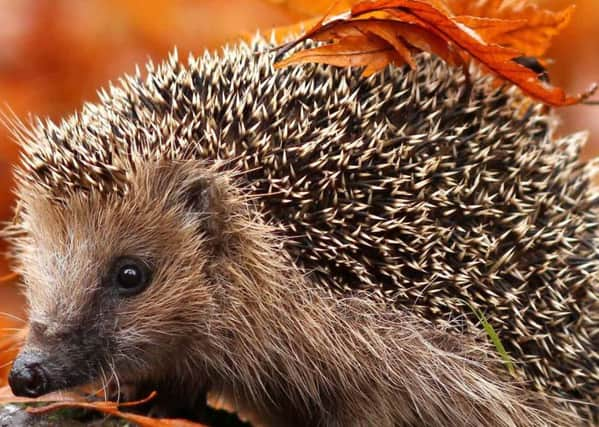Country Diary: Bonfire Night danger for hedgehogs


And birds that love the south have taken wing.
What a splendid pageantry of colour and fruitfulness summer bestowed upon us this year. Driving from Suffield into Hackness, before frosts and winds deprived trees completely of their glorious multi-coloured cloaks, was a feast to the eyes. There has been an abundance of fruit and wild nuts for all to share. What a harvest!
Friendly folk locally, and in villages, have kindly left surplus fruit for passers-by to enjoy. Thank you, Cropton for the lovely apples.
Advertisement
Hide AdAdvertisement
Hide AdAs Bonfire Night approaches, please try to ensure no hedgehogs are hibernating beneath your accumulated pile of debris. As you’ll be aware, hedgehogs are rapidly declining in numbers. When did you last find one, alive? Sad to say it’s about 50 years since I found one, though 30 years ago many dead ones were along the country roads. It’s instinct for hedgehogs to curl into a prickly ball at approaching danger. Nowadays, alas, with spreading traffic they don’t stand a chance, and could soon become extinct.
Sweet chestnuts abound in October and November, with two or three carried in spherical green cases covered with longish spines. Don’t confuse them with horse chestnuts, as those glossy, golden-brown conkers are not for eating. Roasting sweet chestnuts on bonfire night transforms their flavour. Put the nuts in the hot ash of an open fire after first slitting their skins. If you don’t slit them, they explode quite fiercely, scattering ‘shrapnel’ everywhere!
We love walnuts, but know of only two trees locally, and these nuts are best when fairly ripe and dry in late October and November. Before this they’re rather tasteless, so we haven’t picked any. Michael’s father used to pick them in July when they were young and still green. He made pickle from them, sealed them in jars and left them to stand for a month or more before eating. Very nice too.
Now is the time when many mysterious-looking fungi may appear on your lovely lawn.
Advertisement
Hide AdAdvertisement
Hide AdLast year we had quite a variety, but this year just one species – so far – which appears to be the fairy-ring champignon. It’s the toadstool that causes fairy rings on lawns by its habit of growing in an expanding circle, and encouraging the growth of grass behind the growing front. It has small, yellow, slightly pointed caps and few widely-spaced gills. It’s tiny and very delicate and fragile to touch, and is one of many similar species related to mycena. It should not be eaten unless you’re 100 per cent sure of its identity.
With dark nights drawing in, we like to drive to a quiet spot overlooking the bay, and watch the tides.
Michael’s busy making bird tables donated to charity shops. Please feed the birds this winter.